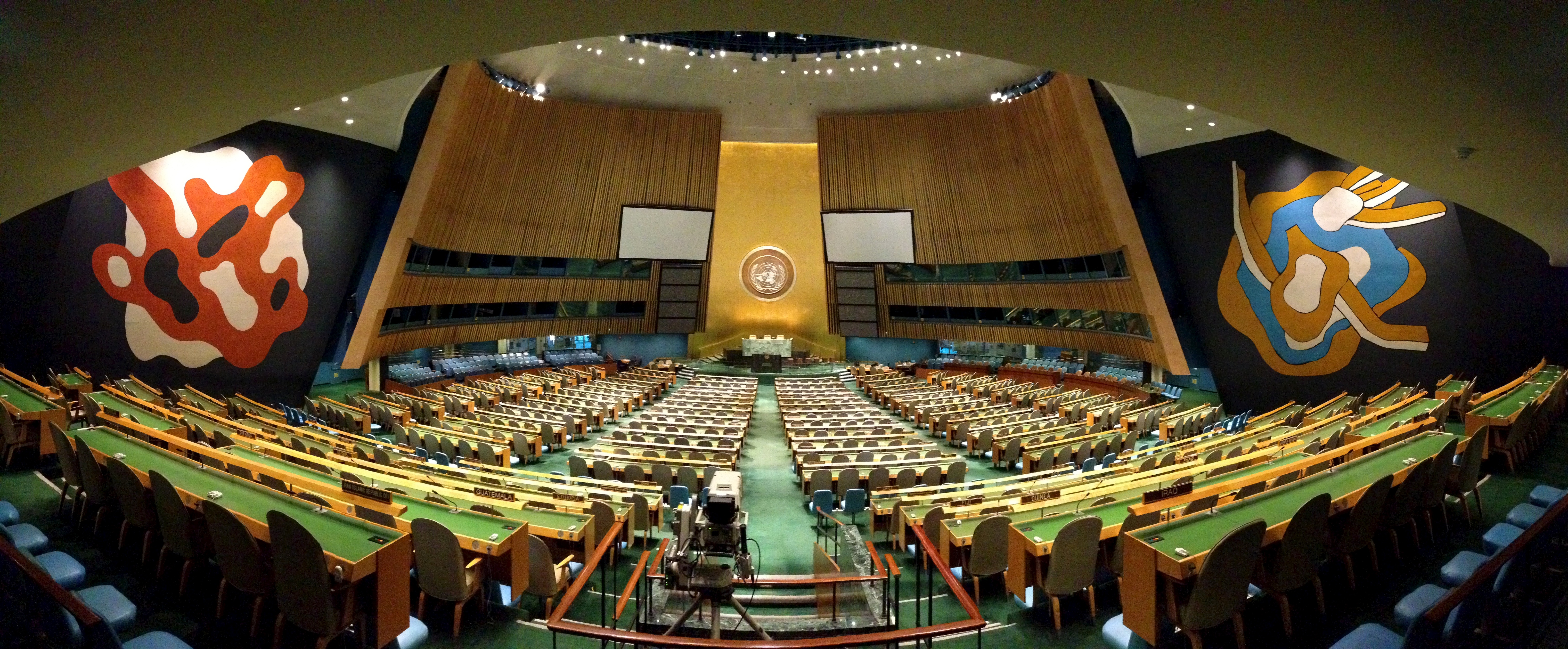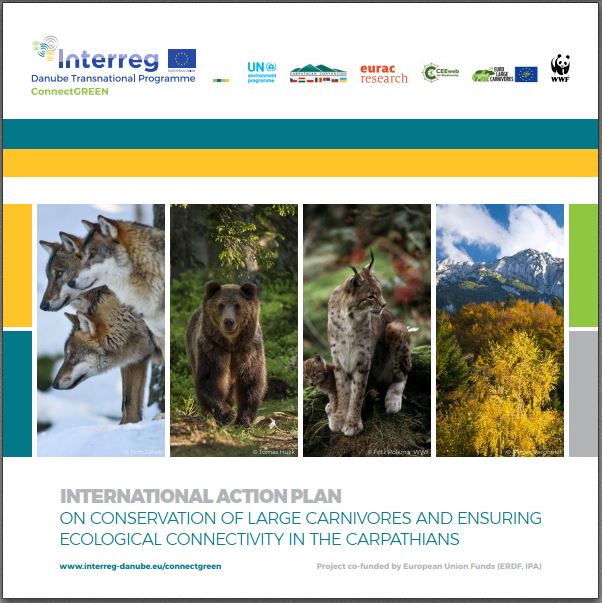ConnectGREEN - Ecological Connectivity receives international boost UNGA Resolution on Ecological Connectivity
26-04-2021
The United Nations General Assembly (UNGA) adopts a resolution entitled “Nature knows no borders” on transboundary cooperation in environmental conservation, including the preservation of ecological connectivity for wildlife. In so doing, the UNGA sends a strong signal to governments around the world regarding the key role of connectivity in nature preservation and the crucial need for international cooperation to foster and increase the connections between both states and ecosystems.

Image 1: United Nations General Assembly Hall © creative commons licence
During the plenary meeting of its 75th session, held on 16 April 2021, the UNGA unanimously adopted a resolution put forward by the Kyrgyz Republic, together with 60 state co-sponsors (press release by the Kyrgyz Republic). The resolution is entitled "Nature knows no borders: transboundary cooperation – a key factor for biodiversity conservation, restoration and sustainable use".
Under the overarching targets to strengthen transboundary cooperation on the conservation of biological diversity and the rational use of natural resources according to the principles of sustainable development and the implementation of the UN 2030 Agenda, the resolution repeatedly underlines the importance of ecological connectivity, positing it as a central pillar of biodiversity conservation efforts.
In two notable paragraphs, the resolution:
‘Stresses ‘the need for international and transboundary cooperation at all appropriate levels, as well as between relevant stakeholders, on the enhancement of connectivity between ecosystems and cooperation in order to maintain healthy and intact ecosystems and habitats, which are needed to conserve biodiversity and to ensure that nature can continue to provide ecosystem services to people;’
and
“Encourages Member States to maintain and enhance connectivity of habitats, including but not limited to those of protected species and those relevant for the provision of ecosystem services, including through increasing the establishment of transboundary protected areas, as appropriate, and ecological corridors based on the best available scientific data, in accordance with international law and national legislation, and to promote initiatives to strengthen the already existing ones and improve their effective management and other effective area-based conservation measures, thereby contributing to the maintenance of their functioning;”
In a notable acknowledgement of on-going initiatives to safeguard and increase ecological connectivity in Central and Eastern Europe, the resolution welcomes the transboundary efforts made by the Framework Convention on the Protection and Sustainable Development of the Carpathians, with whom the ConnectGREEN project consortium collaborates closely to enhance the connectivity between habitats in the Carpathian Mountains.
The most recent product of this close cooperation between the Carpathian Convention and ConnectGREEN is an ‘International Action Plan on Conservation of Large Carnivores and Ensuring Ecological Connectivity in the Carpathians’, which was formally adopted at the Sixth Meeting of the Conference of the Parties to the Framework Convention on the Protection and Sustainable Development of the Carpathians (COP6) in November 2020.

Image 2: International Action Plan on Conservation of Large Carnivores and Ensuring Ecological Connectivity in the Carpathians
The Action Plan lays down 7 Strategic Objectives for the Parties to the Convention and relevant actors to adequately manage and protect one of Europe’s last great wilderness areas:
- Standardize monitoring procedures of large carnivores in the Carpathians
- Prevent habitat fragmentation and ensure ecological connectivity in the Carpathians
- Improve coexistence of humans with large carnivores
- Improve law enforcement with respect to illegal killing of large carnivores
- Improve communication and cooperation between all relevant stakeholders
- Strengthen institution capacity-building
- Decrease impacts of climate change on large carnivores and their habitats
It will directly build on the outcomes of ConnectGREEN, as well as the project’s predecessor TRANSGREEN, now completed, and successor SaveGREEN, which will continue its work to safeguard the functionality of transnationally important ecological corridors in the Danube region until the summer of 2022.
The Action Plan therefore represents a timely practical example to affirm the view of the UNGA that with active transboundary cooperation between governments, public authorities, private corporations and the general public, we can achieve significant steps towards safeguarding our natural heritage in the Danube-Carpathian region covered by the EU Strategy for the Danube Region.
